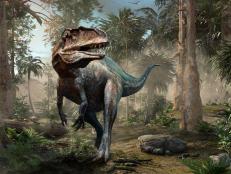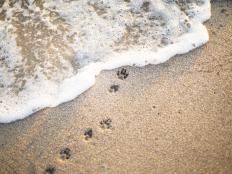Articles
Showing 136 - 150 of 2,628 results
Blind Dogs Can Still Play Fetch. A Newfound Nose-to-Brain Connection Explains Why.
Why are dogs such great sniffers? A new canine connection shows powerful brain links between dogs’ sense of smell and sight.
This Year, James Webb will Take a Close Look at a Lava World
The James Webb Space Telescope is gearing up to be an exoplanet extraordinaire. Among many other missions and targets, astronomers plan to use the observatory, now in its final stages of preparations to study…well, a world where it might rain lava.
Curiosity Daily Podcast: Space Slingshot, Ancient Modern Pants, Lifesaving Silence
Hear about a slingshot launching payloads into space, the impressively modern-looking world’s oldest pants, and how moth wings are able to absorb sound to avoid detection from bats.
Curiosity Daily Podcast: Nano Cancer Fight, Memory Structure, Coffee Buzz Days
You’re going to learn about how our body’s pH is helping us fight cancer, how memories aren’t stored where we thought they were, and how drinking coffee could have you spending a lot more at the store.
Groundbreaking New Images of Jupiter Exceed NASA's Expectations
NASA’s James Webb Space Telescope captured new images of Jupiter revealing never-before-seen details of the planet.
The Romantic, Heartbreaking Love Story Behind the Taj Mahal
Ivory white columns rise from the earth, framing the central masterpiece: an intricately carved marble domed structure stood on a square plinth, resplendent with arched doorways, and topped by a bronze moon that reaches for the sky.
113 Million-Year-Old Dinosaur Tracks Uncovered Due to Drought
Severe drought conditions dried up a river at Dinosaur Valley State Park in Texas leading to the pre-eminent discovery.
Can this New 'iTEARS' Technology Help Detect Diseases?
New technology is helping scientists decipher microscopic tear particles to offer clues to what’s going on inside the body. With a simple few drops of tears, this technology can help doctors and scientists detect eye disease and signs of diabetes.
Shark Week: The Podcast – Dr. Greg Skomal talks Great White Sharks in Cape Cod
Marine biologist and star of Discovery’s Shark Week documentary Great White Intersection, Dr. Greg Skomal joins Luke Tipple to discuss a surge in great white shark numbers in Cape Cod.
Curiosity Daily Podcast: Making Dragon Fire, Dating Ghosts, Blazing Fast Covid Tests
Tune in to learn about how fire-breathing creatures are possible, what makes a bad breaker-upper, and new blazing fast, cheap, and accurate COVID tests.
Water Cremation Offers Eco-Alternative For Funerals
Funeral traditions around the world vary widely depending on cultural and religious practices, but they often use burial or cremation. Neither method is good for the environment, and green alternatives are gaining in popularity. Aquamation, or water cremation, is a low-carbon, less energy-intensive process that could replace both.
The Ancient Monkey Puzzle Tree Outlasted Dinosaurs. Now It's Facing Extinction.
The monkey puzzle tree is a remnant of the Jurassic era, more than 145 million years ago, surviving way past its ancient dinosaur counterparts. Reaching heights of about 160 feet, the evergreen tree has a lifespan of up to 700 years and stiff scaly branches with rigid spiral leaves. Monkey puzzle trees’ presence in the wild is shrinking and after million years, their very existence is now endangered.
How Astronomers Use a Trick of Gravity to See the Most Distant Objects in the Universe
Let’s say you’re an astronomer (work with me here) and you want to take a picture of something incredibly, deeply far away. You know, the typical business of astronomy.
Digital Twin Cities Can Shrink the Impact of Planet’s Largest Polluters
Cities are the planet’s largest emitters of greenhouse gas emissions, so they offer the greatest opportunity to tackle climate change. Hitting net zero emissions by 2050, a target set at the COP26 summit, could be achieved more quickly using city digital twins – working virtual replicas – that help track, manage and reduce environmental damage rapidly.
Curiosity Daily Podcast: Rice TV Screen, Satellite Warfare, Unraveled DNA
Do you want to know about a new environmentally friendly way to make TV Screens, what future space warfare might look like, and how we have finally completely unraveled the human genome?

























